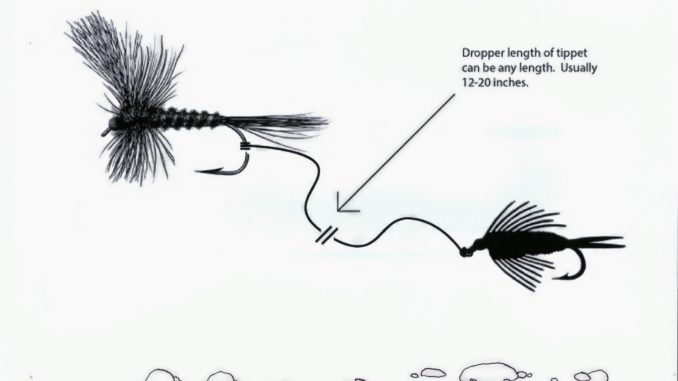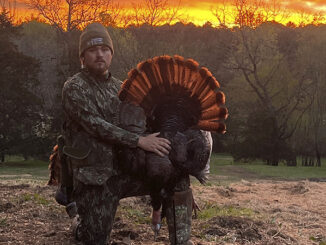
Double-dropper rig puts nymph and dry fly in front of fish
Mountain trout don’t act that differently from other freshwater species. They try to hang out in an area protected from the current, and they don’t want to have to work that hard to feed. They will feed on insects along the bottom of a rocky stream or rise to the surface. That’s why anglers using a “dropper rig” can be successful during the summer.
Kevin Howell of Davidson River Outfitters (888-861-0111) said this rig combines two different meals that a hungry trout might consider ordering up for breakfast.
“Most guys prefer a nymph as the bottom lure because it’s heavier,” Howell said. “Tie a No. 14 beadhead nymph to one end of a 6X tippet, then go up the line about 12 to 20 inches, depending on the depth of water you’re fishing, and tie the leader to the shank of a No. 12 floating fly.
The dry fly is tied on using a stronger, 5x tippet, so that if the nymph gets hung up bouncing along the bottom, the lighter tippet will break and a fisherman won’t lose both flies.
The dry fly remains on the surface to attract trout, taking advantage of a surface insect hatch, while the nymph will be visible to trout near the bottom.
“Most of the time, trout will stay about a foot from the bottom,” said Tom Rosenbauer of Orvis. “They’ll move from a few inches to a foot or two, depending on water clarity, temperature and the amount of food in the water.
“You don’t want the nymph to hit the bottom, obviously to avoid hangups, but also because trout don’t hit flies below them because they can’t see them.”
Most trout anglers who wade, which can be refreshing during a hot summer’s day, work their way upstream, usually with a 6-weight rod with floating line, and cast at a 45-degree angle toward current breaks, watching the current carry the floating fly, which acts as a strike-indicator if a trout hits the nymph.
However, that’s not the most effective way to fish a double-dropper rig.
“That can be deadly when trout are feeding actively on the surface, but if not, current will put a bow in a floating line,” Rosenhauer said. “So try to keep as much of your line off the water as possible by raising your rod tip to slow the fly’s sideways skid. Making shorter casts also helps. Then follow the position of the flies with your rod tip and make small line mends to keep your line straight. You won’t miss as many strikes that way.”
A favorite technique in North Carolina’s mountains is “dabbling,” which requires using a fly rod like a cane pole fishing a bream bed.
An angler walks upstream and flips his double-dropper lure just a little longer than his rod’s length while holding the rod tip almost vertically. He allows the lures to slide past him, hoping for a strike, then walks a few more feet to virgin water and repeats the process.
Dabbling is an excellent fishing tactic for narrow streams that have little casting room. Another advantage of fishing such streams is most fly anglers bypass them because of worries about overhanging limbs that ruin casts. But small streams may hold trophy trout because of less fishing pressure.





Be the first to comment